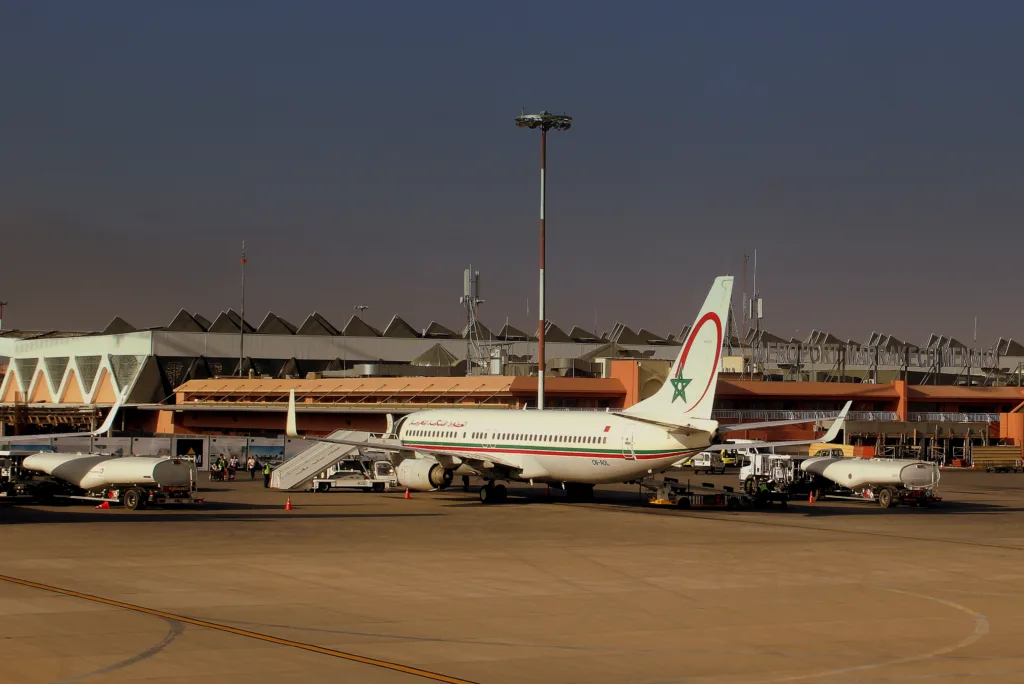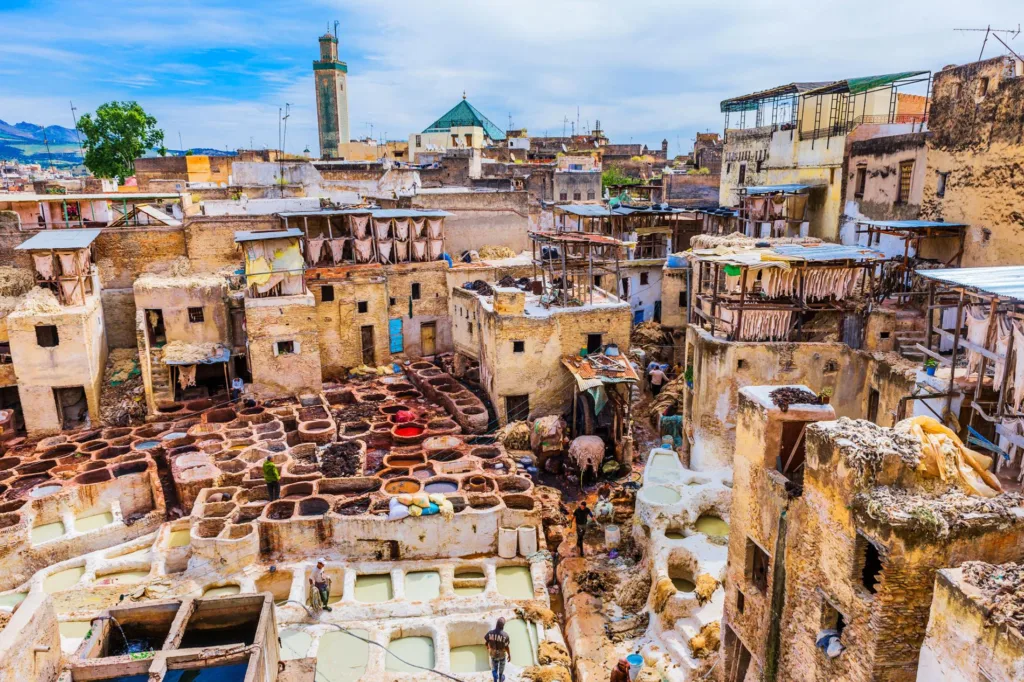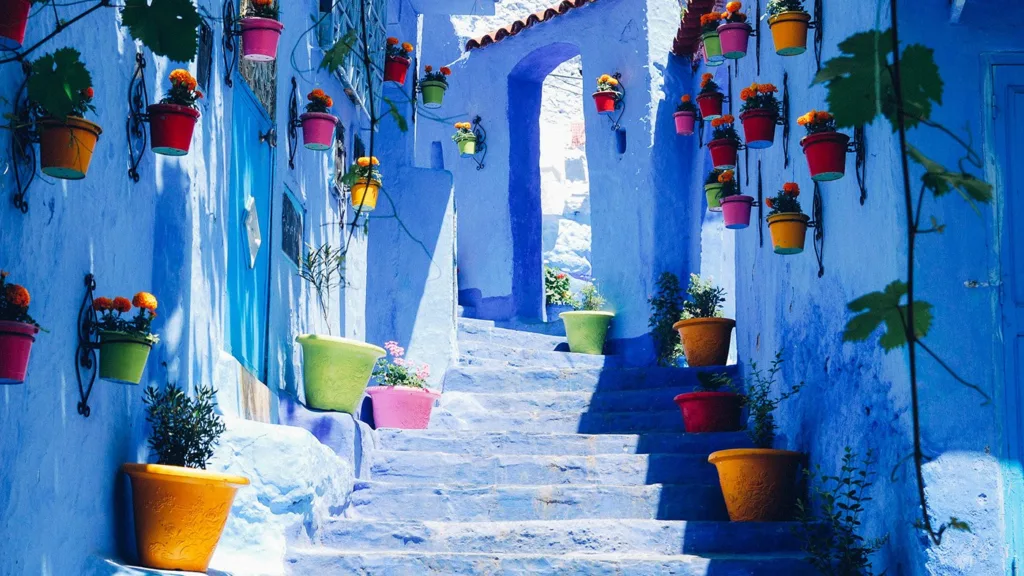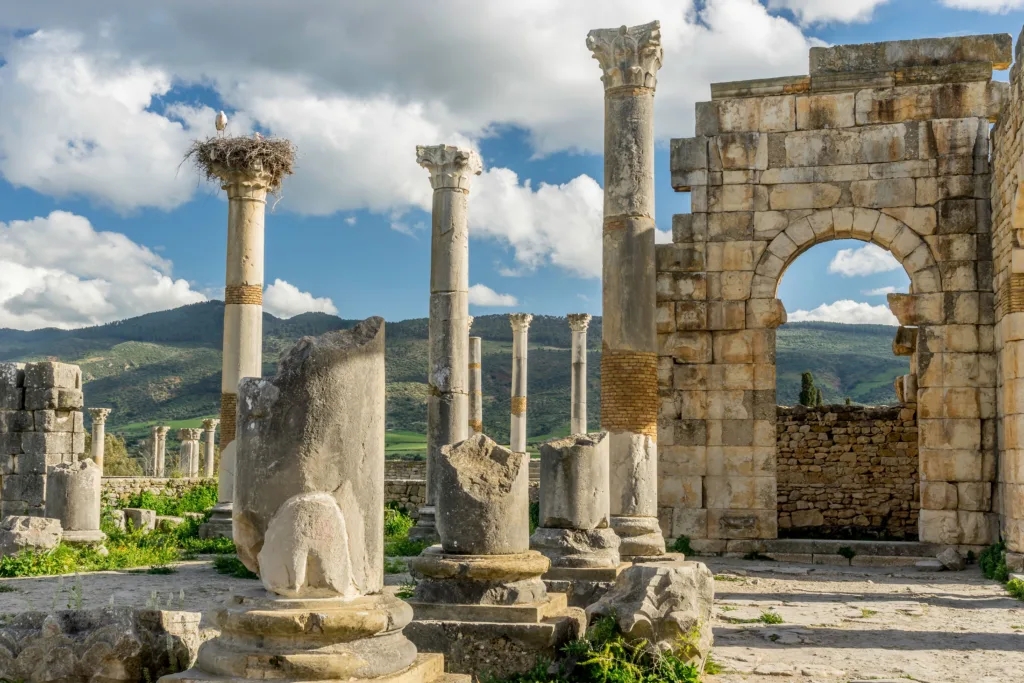Overview & Highlights:
- Explore the ancient medina of Fes with a private guide.
- Discover the charming blue-washed Medina of Chefchaouen.
- Visit the beautiful city of Tetouan and its white medina.
- Explore the sites of Tangier.
- Visit the quiet town of Asilah.
- Explore Rabat; Hassan Tower, Mohammed V Mausoleum and Oudayas Kasbah.
- Visit Casablanca and Hassan II Mosque, the largest mosque in Africa.
- Visit Meknes and Volubilis, the site of the old Roman ruins.
Itinerary:
Day 1: Arrival – Fes.

Upon arrival, we will meet you at the airport and head to your accommodation in Fes. There you will take time to relax and recover from your journey.
Overnight in Fes.
Day 2: Fes sightseeing – Chefchaouen.

After breakfast in your Riad/Hotel, you will meet your private guide to explore the different sights of the ancient Medina of Fes. Begin your tour with a visit to the royal palace, with its seven golden doors, and learn about the significance of the intricate decor.
Continue and stroll through the Mellah, or Jewish quarter, which was built next to the palace to offer protection. And then take in the view of the city from Borj Sud, a former fortress and one of the lookouts on a hill where you can see all of Fes laid out, allowing you to spot landmarks otherwise hidden by the skyline-obscuring buildings.
Visit a pottery cooperative to see how they make the unique Fes pottery, as well as handcrafting the intricate mosaics adorning half of Morocco. Head into the ancient medina and step into a sort of living museum. The Fes medina is very much a local community that lives and works and goes about daily life in the medina.
Stop by the Al-Quaraouiyine University, the oldest degree-granting university still in operation, have been founded in 859CE by a woman. Visit handicraft workshops, where you will see why Fes is considered the handicraft capital of Morocco.
This can include, among other things, the silk weavers, where beautifully colorful fabrics are woven from silk fibers of the agave plant, and the famous Fes tannery, where they process all manner of animal hides by hand, much as they have for nearly 1000 years. During your tour of the medina, you will stop for lunch in a restaurant that would be very easy to walk right past, but is truly a hidden gem. In the afternoon, travel north to Chefchaouen, nestled high in the Rif Mountains.
Overnight in Chefchaouen.
Day 3: Chefchaouen – Tetouan – Tangier.

After breakfast you will check out of your Hotel/ Riad, and take quiet morning to explore Chefchaouen, the charming blue-washed medina, an endless winding maze of picturesque homes and streets. That in the late 15th century its population was boosted by a number of Jews and Muslims fleeing southern Spain and remained mostly untouched and isolated until the last century.
There you can see the Grand Mosque and the Kasbah. The Mosque was built by Moulay Mohamed in 1560 and cannot be entered by non-Muslims (but the view from the outside is still nice). A visit to the Kasbah (old fortification) can be done in 30-40 minutes, where you can visit a garden, a museum, and some of the old prison cells. And hike up to the Spanish Mosque further up the mountain, looking out over Chefchaouen.
In the early afternoon, you will travel down the mountains to Tangier and make stop in Tetouan, the beautiful with city nicknamed the White Dove, lies along the Martil Valley and it’s one of the two major ports of Morocco on the Mediterranean Sea. In 1913, Tetouan became the capital of the Spanish protectorate of Morocco, until 1956 when Morocco regained its full independence. It is a renowned multicultural center. And its medina is a UNESCO World Heritage site since 1997.
It has also been part of the UNESCO Creative Cities Network in the area of Crafts and Folk Art since 2017. Then continue to Tangier to explore its different sites, including the medina, Cap Spartel, and the legendary Cave of Hercules. Legend holds that when Hercules was in need of a place to rest between two of his labors, he swam across the Strait of Gibraltar and ripped the cave from the side of the cliff with his hands.
The opening of the cave that faces the sea is in the shape of Africa. Then head to the medina, where you will see York Castle and the Kasbah Museum. In the evening drive to your hotel where you will spend the night.
Overnight in Tangier.
Day 4: Tangier – Asilah – Rabat – Casablanca.

On the morning, we will head down along the coast toward Casablanca, passing by Asilah, a quiet beautiful town on the Atlantic coast, with well-preserved old walled medina that dates mostly from the Portuguese occupation (15th-16th century) and afterwards.
The medina has been heavily restored and its buildings are typically painted white, with occasionally blue or green, in addition to which can be found many of the murals. Asilah hosts annual music and arts festivals, including a mural-painting festival.
The festival is also the occasion for mural painting in which the medina’s houses are painted with new murals every year. It has also a weekly market every Thursday, and due to its proximity to Spain, the cuisine in Asilah is described Ibero-Moroccan with notable delicacies and seafood. Then continue to Rabat, Morocco’s current capital and its fourth imperial city, where you will visit the Hassan Tower, which has sat unfinished since 1199.
Commissioned by Abu Yusuf Yaaqub al-Mansur, the tower was to be the minaret for the largest mosque in the world. Unfortunately, when the sultan passed away in 1199, the project was abandoned, leaving some partial outer walls, 348 columns, and a minaret only standing half-finished at 140 feet rather than the intended 260 feet. Standing opposite the Hassan Tower is the Mohammed V Mausoleum, which contains the tombs of Mohammed V, the current king’s grandfather, as well as the king’s father, Hassan II, and his uncle, Prince Abdullah.
t is considered a masterpiece of Alaouite architecture with its white walls and green tiled roof. Visit also the Kasbah of the Oudayas, which is a small fortified town area of the city, with white and blue houses, a nice Moorish garden and a breath taking view of the opposite city Sale and the Atlantic Ocean.
In Rabat you will enjoy your lunch in one of the seaside restaurants that serve Moroccan and seafood. And drive to Casablanca, where you will visit to the stunning Hassan II Mosque, the largest in Morocco and the third largest mosque in the world that non-Muslims are allowed to enter.
Able to accommodate up to 105,000 people in prayer, this marvel of modern Moroccan architecture is the work of hundreds of expert craftsmen from around the country, many of them donating their work. Then we drive along the Cornish where you can have also walk, at its end there is Morocco Mall, the largest shopping center in Africa which was opened in December 2011, with an impressive marine aquarium that extends through all floors and presents forty fish species. In Casablanca you can also visit Mohamed V plaza and Rick’s cafe before driving to your hotel.
Overnight in Casablanca.
Day 5: Casablanca – Volubilis – Meknes – Fes.

This morning we will travel back to Fes. On the way we will make stop to explore Volubilis the site of the ancient Roman ruins dates back to 3 BCE, when it was the capital of the kingdom of Mauretania. The Roman rule began in the 1st century CE, and continued until it fell to the local Berber tribes in 285 CE. The remains of many ancient structures are still being excavated, as well as the triumphal arch still standing.
There are several large mosaic floors still fully intact, and they will still reveal vibrant colors when wet. Not far from Volubilis you will explore the holy town of Moulay Idriss which is famous for being the site of the tomb of Idriss 1st, the first major Islamic ruler of Morocco, after whom the town is named.
From there the drive continues to Meknes, one of the four Moroccan imperial cities, which was the capital of Morocco from 1672 to 1727 under sultan Moulay Ismail. Where you will be able to tour the city and explore its ancient Medina with its square called “Lhdim”. See Bab Mansour, which was built with marble columns token from nearby Volubilis. And stop by the Royal Stables, which once held the sultan’s 12,000 horses, each with its own groom and slave to attend to its every need.
As well as Visiting the Mausoleum of Moulay Ismail, one of only three active Moroccan shrines that non-Muslims may enter. In spite of his excesses, Moulay Ismail is fondly remembered for bringing peace and prosperity, and driving out Spanish and British forces. In the late afternoon you will head to Fes where you will spend the night in hotel/Riad.
Overnight in Fes.
Day 6: Fes – Departure.

In the morning, after breakfast check out of your hotel and transfer to the airport for your departure flight.
